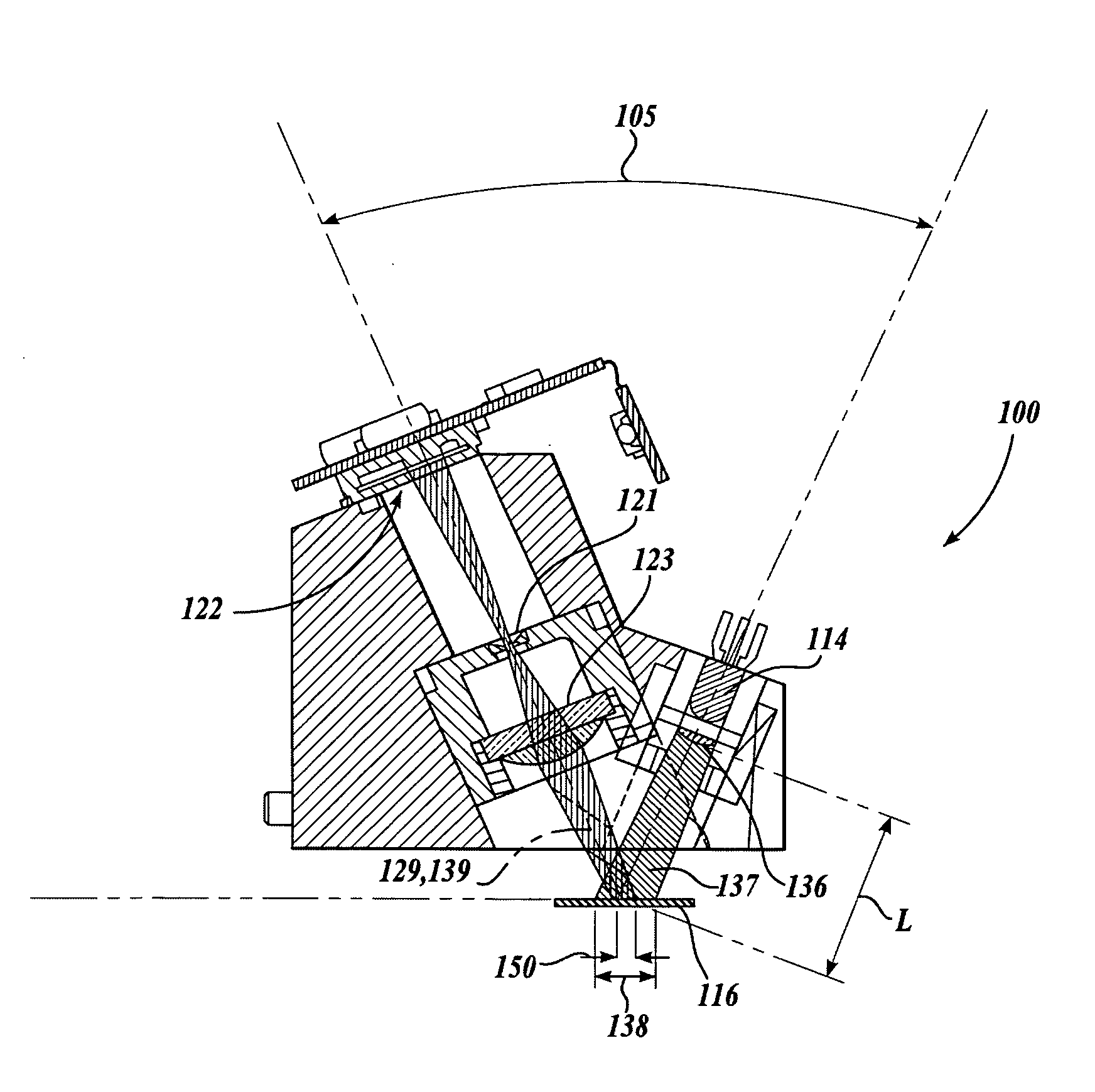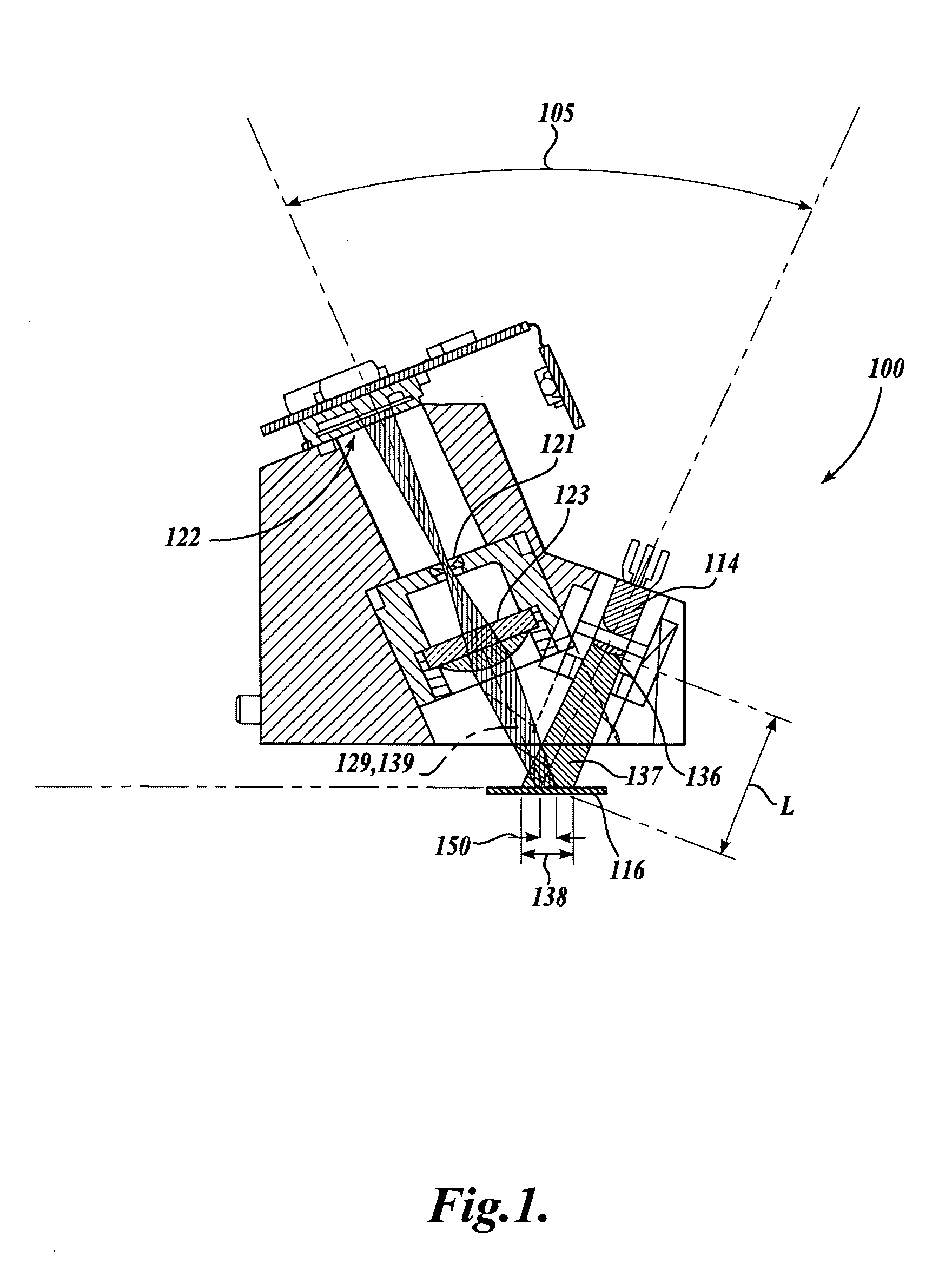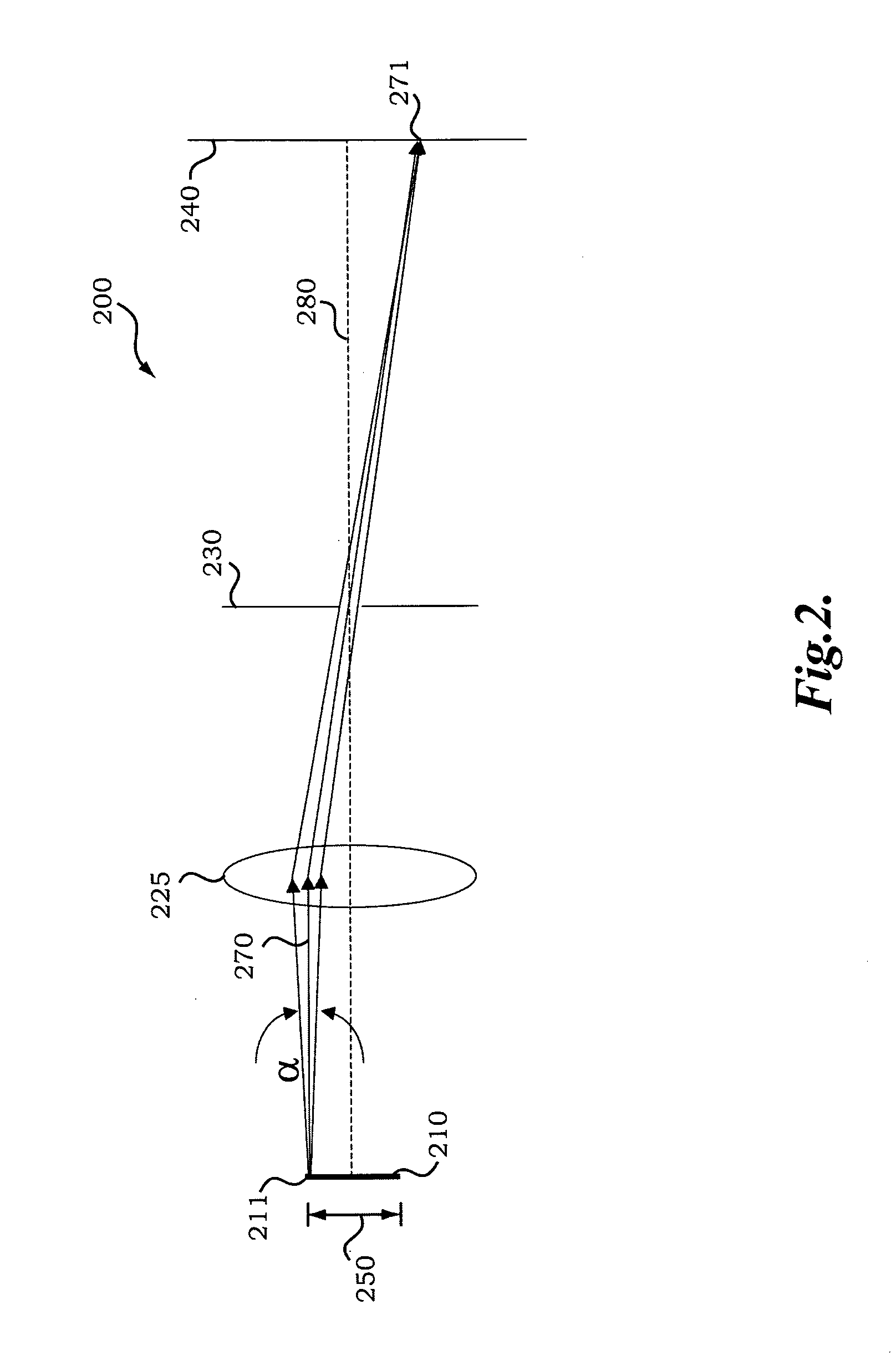Illumination configuration for imaging-type optical encoders
an encoder and image technology, applied in the field of imaging-type optical encoders, can solve the problems of difficult to achieve uniform image illumination, measurement accuracy is disproportionately reduced, and the coherence of illumination is difficult to achieve, so as to improve the uniformity of illumination, and reduce the prone to coherence artifacts
- Summary
- Abstract
- Description
- Claims
- Application Information
AI Technical Summary
Benefits of technology
Problems solved by technology
Method used
Image
Examples
first embodiment
[0030]FIG. 3 is a diagram of an illumination configuration 300 for an imaging-type optical encoder in accordance with the present invention. The illumination configuration 300 includes a scale object 310 arranged at a distance L along an optical axis 380 from a condenser lens 320, and an illumination source 390 with an emitter area that has a nominal dimension w, arranged at a focal distance f from the lens 320. A FOV dimension 350 on the scale object 310 is defined by the characteristics of an optical system (not shown) that images the scale object 310. For example, the FOV may be defined by the magnification of the imaging optics and the size of the field stop (e.g., the detector dimensions). The FOV may also be limited based on the optical performance of the imaging lens. In this case a mechanical or software field stop may be provided to limit the FOV to a dimension smaller than the detector dimensions. Various considerations related to the FOV of a miniature imaging-type encode...
second embodiment
[0048]FIG. 7 is a diagram of an illumination configuration 700 for an imaging-type optical encoder in accordance with the present invention. The illumination configuration 700 is similar to the illumination configuration 300, and includes a scale object 710 arranged at a distance L from a condenser lens 720, which may be a collimating lens, and an illumination source 790 with an emitter area that has a nominal dimension w. A FOV dimension 750 on the scale object 710 is defined by the characteristics of an optical system (not shown) that images the scale object 710. In addition, the illumination configuration 700 includes a diffuser 715 located between the condenser lens 720 and the scale object 710. The diffuser 715 may be utilized to help reduce changes in the irradiance distribution due to changes in the pitch or roll alignment of the illumination system optical elements relative to the scale object 710. Such misalignments may displace an illumination distribution across the FOV, ...
PUM
 Login to View More
Login to View More Abstract
Description
Claims
Application Information
 Login to View More
Login to View More - R&D
- Intellectual Property
- Life Sciences
- Materials
- Tech Scout
- Unparalleled Data Quality
- Higher Quality Content
- 60% Fewer Hallucinations
Browse by: Latest US Patents, China's latest patents, Technical Efficacy Thesaurus, Application Domain, Technology Topic, Popular Technical Reports.
© 2025 PatSnap. All rights reserved.Legal|Privacy policy|Modern Slavery Act Transparency Statement|Sitemap|About US| Contact US: help@patsnap.com



